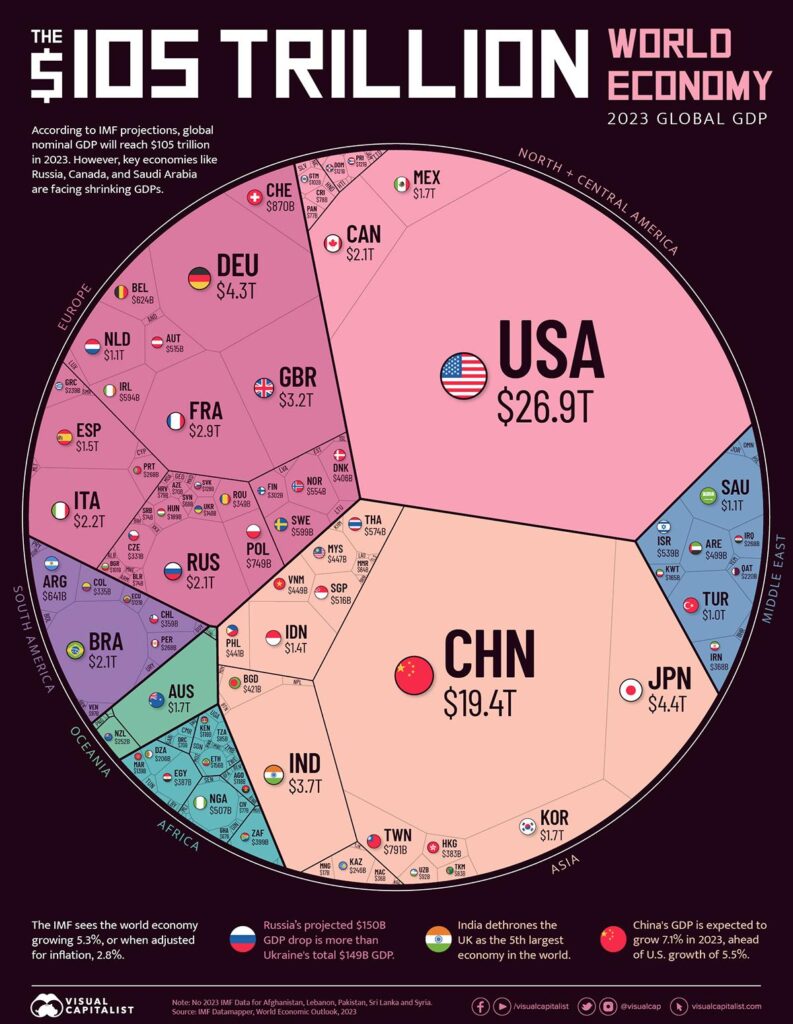Understanding the Recent U.S. GDP Decline and Its Global Implications
Recent findings from Bloomberg have unveiled a notable decrease in the Gross Domestic Product (GDP) of the United States, signaling a critical juncture in the ongoing saga of global economic trends. This downturn, primarily linked to extraordinary trade obstacles, has caught the attention of economists and policymakers alike, igniting urgent conversations about its potential repercussions on both domestic and international markets. As countries contend with disruptions in supply chains and evolving trade relationships, this decline highlights the delicate interdependence of global economies and their susceptibility to external disturbances. In this article, we will examine the elements leading to this drop in U.S. GDP, investigate its broader effects on international trade dynamics, and evaluate how these developments may influence economic strategies moving forward.
Impact of Trade Disparities on U.S. Economic Growth
The growing disparity between imports and exports within the United States has raised significant concerns among economists as it fundamentally reshapes American economic growth trajectories. Current analyses indicate that an expanding trade deficit is contributing to diminished domestic production capabilities along with job losses across vital industries. Companies are facing challenges due to their heavy dependence on foreign products which leads to reduced investments in local manufacturing sectors as well as innovation initiatives.
This shift is resulting in altered consumption behaviors; while some vibrant sectors stagnate or decline, overall debt levels continue to rise due to these imbalances.
- Reduced Market Competitiveness: Prolonged trade deficits often hinder domestic industries’ ability to compete against lower-priced imports, resulting in lost market share.
- Job Losses: Export-dependent sectors may contract significantly leading to substantial employment reductions within manufacturing fields.
- Diminished Investor Confidence: Negative perceptions surrounding market viability can prompt investors to withdraw from areas perceived as vulnerable due to foreign competition affecting capital inflows.
| Indicator | 2019 | 2020 | 2021 |
|---|---|---|---|
| Total Trade Deficit (Billion $) | $616 billion | $893 billion | |
| $859 billion |
Approaches for Reducing Trade Risks While Strengthening Domestic Industries
Navigating through turbulent international trading conditions requires decisive actions from policymakers alongside industry leaders aimed at minimizing risks while enhancing local industries’ resilience.Diversifying trading partners emerges as a crucial strategy that enables America’s economy by lessening dependency on a narrow range of markets; fostering connections with emerging economies alongside reinforcing existing alliances can help businesses shield themselves against fluctuations impacting specific regions or nations.
Moreover,< strong >investing into advanced manufacturing technologiescan improve productivity levels while lowering costs making domestically produced goods more competitive globally.
Another essential tactic involves bolsteringsupply chain robustnessthrough prioritizing local sourcing coupled with strategic stockpiling practices for essential commodities; by focusing efforts towards national suppliers implementing just-in-case inventory methods businesses can mitigate disruptions stemming from international conflicts or logistical bottlenecks.
Additionally targeted government initiatives such asand grants aimed at promoting innovation could stimulate growth across pivotal sectors like renewable energy technology ensuring not only protection but also preparedness for future challenges faced within today’s interconnected economy.
Looking Ahead: Navigating Economic Uncertainty Within Global Markets
The current landscape surrounding global economics is increasingly influenced by unpredictable events challenging established theories along traditional practices . The latest statistics indicate concerning declines regarding US GDP significantly impacted by shifting dynamics related specifically towards trades . Factors contributing include : p >
- < strong >Changes regarding International Tariffs< / strong > li >
- < strong >Disruptions occurring throughout Supply Chains< / strong > li >
- < strong >Variations seen amongst Foreign Currencies< / strong > li >
- < strong >Escalating Geopolitical Tensions< / strong > li >
ul >< p >
As nations confront these hurdles experts advocate adopting proactive measures designed around fostering innovation diversifying partnerships enhancing capabilities associated locally produced goods . A key component addressing such issues lies understanding prevailing market trends illustrated below showcasing vital economic indicators :
< / p >Economic Indicator< / th >< th >Current Value< / th >< th >Previous Quarter Value< / th > tr > < td US GDP Growth Rate -1 . 2 %< / td >< td 0 .5 %< / td > tr > < td Unemployment Rate -6 . 1 %< / td >< td 5 .8 %< / td > tr > < td Inflation Rate -4 .5 %< / td >< td 3 .9 % < / tr > < / tbody >
< / table>
